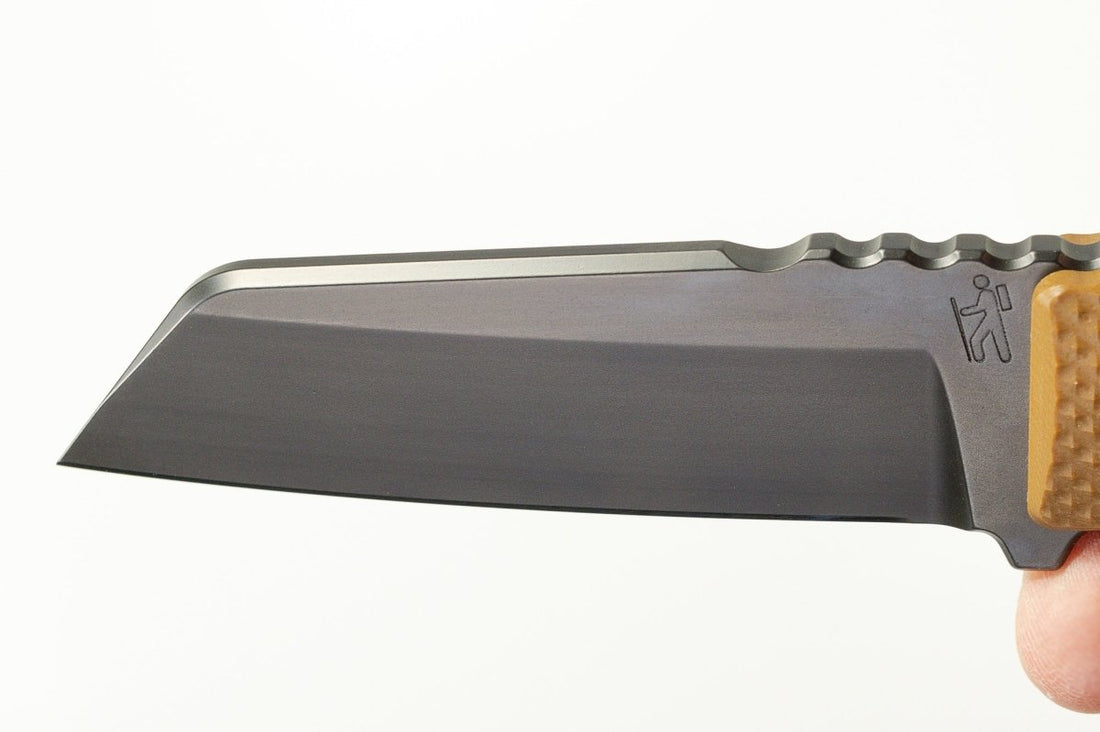The Enduring Utility of the Wharncliffe and Sheepsfoot: A Blade Style Reimagined
Few blade profiles have stood the test of time quite like the Wharncliffe and Sheepsfoot. Originally conceived as utilitarian tools, these blade styles have evolved into modern mainstays—favored by tradespeople, outdoorsmen, and self-defense practitioners alike. At Dauntless Manufacturing, we honor the legacy of these designs while embracing their evolution through our own lens of form, function, and craftsmanship.
Today, we’re spotlighting three knives from our lineup that embody this progression: the Work Knife V1, designed by Matt Helm; the Hiker Wharncliffe, designed by Dauntless co-founder Zach Thull; and the Moss Sheepsfoot, designed by fellow co-founder Chris Moss.
Origins and Intent
The Wharncliffe blade traces its roots back to 19th-century England. Its defining feature—a straight edge with a spine that tapers down to the tip—was designed for controlled cuts, detail work, and tip strength. The closely related Sheepsfoot blade was originally crafted for safety, with a blunt spine that drops sharply to the edge, minimizing the risk of accidental piercing.
Both styles prioritized utility, safety, and control. Whether on a ship deck, a workbench, or in a first responder's kit, they served as reliable, no-nonsense tools.
The Evolution: Tradition Meets Innovation
While the original Wharncliffe and Sheepsfoot had strict definitions, today's blades have evolved—hybridizing classic profiles with modern features to suit a wide range of uses.
Take the Work Knife V1, designed in collaboration with Matt Helm. Based on his legendary Work Knife design, the V1 stays true to Wharncliffe roots with its straight edge and low tip profile. The spine features a slight drop, and the double-flat grind delivers performance, strength, and control—ideal for utility tasks and precision work.
The Hiker Wharncliffe, designed by Zach Thull, leans into minimalist outdoor function. With a spine that gently slopes and a linear edge, it's an excellent tool for carving, slicing cordage, or prepping food at camp. It's a refined yet simple tool—straightforward, reliable, and perfectly suited to life on the trail.
Then there’s the Moss Sheepsfoot, designed by Chris Moss—a bold evolution of the style. The Moss embraces a much more aggressive belly than traditional Sheepsfoot designs, adding slicing power and dynamic utility without losing the blade control that defines the category. It also introduces a gently curved spine, a built-in ferro rod notch, and is available in both Sheepsfoot and Drop Point variants. This knife proves that “Sheepsfoot” can mean more than just flat lines—it can be functional, aggressive, and modern, all in one package.
Beyond the Blueprint
The truth is, today’s best knives are no longer confined to textbook definitions. At Dauntless, we embrace the idea that a blade can retain the spirit of its original intent while evolving in form. By adding belly, softening spines, experimenting with grinds, and tuning ergonomics, we’re creating knives that offer both classic control and modern versatility.
Each of our designs—the Work Knife V1, Hiker Wharncliffe, and Moss Sheepsfoot—are descendants of the same design family. Yet each takes a different path, shaped by the hands and philosophies of their respective designers. They prove that a Wharncliffe doesn’t have to be a straight line, and a Sheepsfoot doesn’t have to play it safe.
Conclusion
From 19th-century shipyards to the modern workshop, trail, or backcountry firepit, the Wharncliffe and Sheepsfoot profiles continue to deliver. The evolution of these blades—into leaner, meaner, more capable tools—isn’t a departure from tradition. It’s a tribute to their enduring utility.
Whether you’re carrying the Work Knife V1 for daily tasks, the Hiker Wharncliffe for minimalist adventures, or the Moss Sheepsfoot for hard use and wild conditions, you’re using a blade with deep roots—and a sharp future.
Indomiti Sumus.

